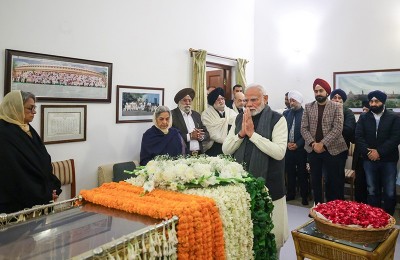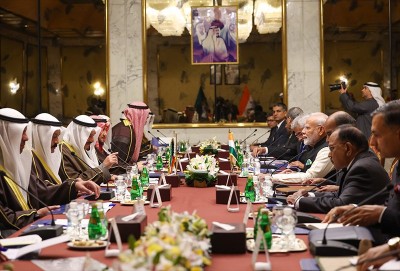
Odisha: Malkangiri: No End in Sight
On May 1, 2017, a tribal labourer, identified as Deba Madkami, a resident of Tamaguda in Malkangiri District, was killed by the Maoists who suspected that he was a 'Police informer'. According to Police, a group of armed Maoists stormed Tamaguda and forcibly took Madkami away from his home at gunpoint. His body was subsequently found with his throat slit, on the outskirts of the village.
On April 28, 2017, about 20 to 30 CPI-Maoist cadres barged into Sudhakanda village under the Kalimela Block in Malkangiri, and killed two villagers, suspecting them to be 'Police informers'. The deceased were identified as Bisu Kirsani and Rama Padiami.
On March 31, 2017, CPI-Maoist cadres shot dead a villager in Malkangiri District, suspecting him to be a 'Police informer'. The deceased was identified as Raghu Hantal from Cheliamunda village under Malkangiri Village (MV) 79 Police Station limits in the District.
On the same day, Maoists also killed one Jaga Rao, a Gram Rojgar Sevak (GRS) of Jantapali village under Chitrakonda Police limits in Malkangiri District by slitting his throat. The Maoists had earlier threatened Jaga, demanding that he leave his job.
According to partial data compiled by the South Asia Terrorism Portal (SATP), at least six civilians have so far been killed in Malkangiri in Maoist-linked violence since the beginning of 2017 (data till June 18). The total number of civilian killings in such violence across Odisha in the current year stands at nine. Overall Maoist-linked fatalities in the State stand at 22, including nine civilians, nine SF personnel and four Maoists (data till June 18, 2017).
During the corresponding period in 2016, only two civilians had been killed in Maoist-linked violence in the District. Through 2016 a total of seven civilians were killed in Malkangiri. The District has experienced varied trends in annual fatalities: four in 2005; three in 2006 and 2007; eight in 2008; seven in 2009; eight in 2010; seven in 2011 and 2012; 18 in 2013; 19 in 2014; 16 in 2015; seven in 2016 and six in 2017 (data till June 18). The most common reason given by the Maoists for killing civilians is that they were 'Police informers'.
Significantly, the District has not recorded an SF killing thus far in 2017. Of the four Maoists killed in 2017 in Odisha, only one (the June 3, 2017, incident) was killed in Malkangiri District. Of a total of 22 Maoist-linked fatalities in the State in 2017, Malkangiri alone accounts for seven, i.e. 31.81 per cent.
Since September 21, 2004, the day CPI-Maoist was formed through the merger of the Communist Party of India (Marxist-Leninist) People's War (People's War Group), and the Maoist Communist Centre of India (MCCI), a total of 7,548 fatalities (including 3,013 civilians, 1,944 SF personnel, 2,591 Maoists) have been reported from 138 Districts across 14 States in India (data till June 18, 2017). Of these, Malkangiri alone has accounted for a total of 283 fatalities (113 civilians, 86 SF personnel, 84 Maoists), i.e. 3.75 per cent of the total, the 5th highest for any single District crossing triple digit fatalities in the country, preceded by Dantewada (Chhattisgarh), 1,132; West Midnapore (West Bengal), 593; Bijapur (Chhattisgarh), 569; and Gadchiroli (Maharashtra), 452. These were the worst among the 22 Districts where fatalities went into triple figures over this period.
Malkangiri alone accounted for 4.42 per cent of total SF fatalities during this period (86 out of a total of 1,944). SFs secured a positive SF: Maoist kill ratio of 1:1.33 across India, but in Malkangiri the ratio favoured the Maoists, at 1.02:1. Interestingly, out of the 68 Districts in the country from where fatalities in both these categories were reported, the kill ratio was in favour of SFs in 36; was at par in five; and favoured the Maoists in the remaining 27. There were another 34 Districts from where only Maoist fatalities were reported. 13 Districts recorded only SF fatalities. There were another 23 Districts in which fatalities were reported, but both these categories were absent.
Malkangiri, located on the troubled tri-junction of Odisha, Chhattisgarh and Andhra Pradesh, occupies an area of 5,791 square kilometres, with a population of 613,192 (Census 2011). The District shares its borders with Vishakhapatnam in Andhra Pradesh to the East; Sukma in Chhattisgarh to the West; Koraput in Odisha to the North and East; and Godavari in Andhra Pradesh to the South. Some 2,321 square kilometres of Malkangiri, about 40.08 per cent of its total geographical area, are under forest cover. Blocks like Podia, Maithili, Kalimela, and the Govindpalli areas of Khairput Block, and the 'cut-off areas' of Kudumulu Gumma Block, have dense forest coverage. Open forests areas also cover major portions of the Korukonda and Kalimela Block, and also, partly, of the Malkangiri Block. The geographical proximity to troubled areas of Andhra Pradesh and Chhattisgarh have made Malkangiri a major transit route for the Maoists to cross over from one State to the other.
A majority tribal and scheduled caste population, as well as widespread under development, poverty, malnutrition and illiteracy, make Malkangiri one of the most backward Districts of India. According to a joint survey conducted by the US-India Policy Institute and the New Delhi-based Centre for Research and Debates in Development Policy, found that among 599 Districts across India under the purview of the survey, Malkangiri ranked near the bottom, at 588. The report took composite development - measured in terms of economic development and the indices of health, education and material well-being - into consideration, and was released on January 29, 2015.
Surprisingly, in a letter released to media persons in Malkangiri on June 16, 2017, CPI-Maoist Korukonda Area Committee leader Ramana claimed that the Government had falsely accused Maoists of opposing development works such as electrification, drinking water and education projects in Malkangiri, and demanded power supply to all the villages under the newly-formed Chitrakonda Block. He alleged that health services were in disarray, that there were no health workers or anganwadi centres and schools in the villages. He alleged that some 'miscreants' had disconnected electricity supply at Hatguda and once the culprits were identified, their case would be decided by a praja adalat (people's court, a Maoist kangaroo court). The Maoist leader insisted that his cadres would never obstruct any development works.
Malkangiri is among the 35 worst Naxal-[Left-Wing Extremism (LWE)] - affected Districts identified by the Union Ministry of Home Affairs (UMHA) across the country.
The Maoists' writ runs across the District. In a recent incident, on April 18, 2017, seven tribal families of Elkanur village under Kalimela Police limits in Malkangiri District left their native village under Maoist threat. According to reports, members of the seven families, who were CPI-Maoist sympathisers, had recently surrendered before the Police expressing their unwillingness to continue their support to the rebels.
Further, the three-tier panchayat (village level local self Government institution) elections, on January 10, 2017, had to be rescheduled as the CPI-Maoist had warned the tribals of Malkangiri District to abstain from the polls. Later, on the rescheduled poll date, on February 19, 2017, even under tight security, there was no voting in 13 booths out of 19 booths in Malkangiri, for fear of the Maoists. Poll officials disclosed that a very small number of people exercised their franchise in the remaining six booths as well. According to a villager, who did not cast his vote, "We preferred not to vote fearing the Maoists. They would punish people who cast votes."
However, claiming that the CPI-Maoist activities had been curtailed to a great extent, Chief Minister (CM), Naveen Patnaik, stated, on March 28, 2017, "The Left-wing extremism remains largely contained to few pockets in the State, such as in parts of Malkangiri, Koraput, Nuapada, Kalahandi and Rayagada Districts. The security forces have been successful in handling the rebels on all fronts."
Unsurprisingly, according to Union Ministry of Home Affairs (UMHA) Annual Report 2016-17, Odisha stood fourth among 10 worst Maoist-affected States in India. Chhattisgarh topped the list, with 395 incidents and 107 fatalities, followed by Jharkhand (323 incidents and 85 fatalities), Bihar (129 incidents and 28 fatalities), Odisha (86 incidents and 27 fatalities) and Maharashtra (73 incidents and 23 fatalities).
The Maoists are struggling to maintain their sway in Malkangiri, as it lies at a critical tri-junction, which gives easy passage for the cadres to move across State borders between Odisha, Andhra Pradesh and Chhattisgarh. There is little in either the State's or the Centre's plans to suggest that things in Malkangiri are going to change dramatically, any time soon. At the present juncture, especially, after the twosuccessive encounters in the Bejingi Forest area between Ramgarh and Panasput in the Malkangiri District on October 24 and 27, 2016, in which SFs killed at least 30 rebels, CPI-Maoist has certainly suffered a major reverse. However, the ground situation in the District remains fragile, the Maoist sway significant, and SF vulnerabilities pronounced.
Support Our Journalism
We cannot do without you.. your contribution supports unbiased journalism
IBNS is not driven by any ism- not wokeism, not racism, not skewed secularism, not hyper right-wing or left liberal ideals, nor by any hardline religious beliefs or hyper nationalism. We want to serve you good old objective news, as they are. We do not judge or preach. We let people decide for themselves. We only try to present factual and well-sourced news.







